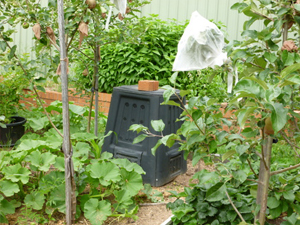 Living in Canberra sees a variety of climates ranging from hot to very cold with some frost including at times even snow. The snow falls have been rarer in later years with the city growing and warming up.
Living in Canberra sees a variety of climates ranging from hot to very cold with some frost including at times even snow. The snow falls have been rarer in later years with the city growing and warming up.
After dealing with the worst years of the drought, letting the lawn go brown and later installing a rain water tank, we finally got stuck into creating a sustainable food garden. The idea at first was to grow as much food as possible especially our most consumed vegetables, some fruit as well as a few gourmet treats normally too expensive to buy in the supermarkets. We wanted the food to be totally organic using homemade compost to enrich the soil, chickens for eggs, manure and free digging machines.
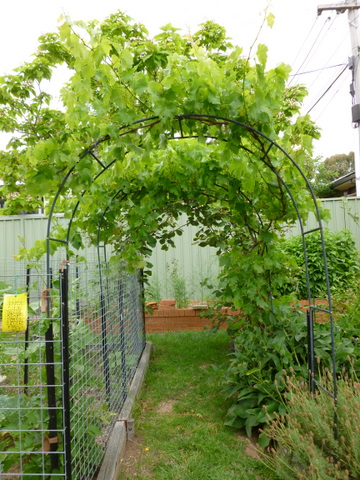
Our chicken shed and run was the first to go up followed by the food beds. The chickens are let out most days for an insect forage and for access to green grass to supplement their mash, grains and scraps. The reward is eggs with their orange yolks and a huge improvement on the shop bought.
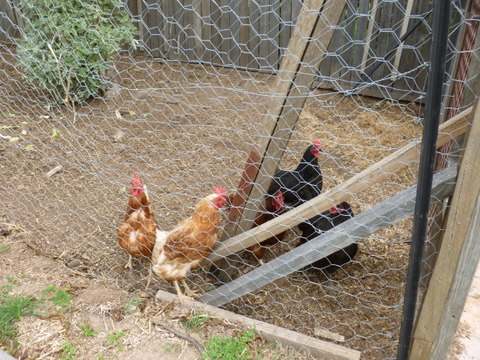 Two years on from this grand design we are not anywhere near being fully self-sufficient but manage to harvest a wide range of vegetables so far including beans, pumpkins, corn, carrots, tomatoes, lettuces, garlic, leeks, broad beans, zucchinis, shallots, spring onions, herbs, potatoes, peas, snow peas and a variety of brassicas. Many of these are raised from seed including a variety of heirloom types.
Two years on from this grand design we are not anywhere near being fully self-sufficient but manage to harvest a wide range of vegetables so far including beans, pumpkins, corn, carrots, tomatoes, lettuces, garlic, leeks, broad beans, zucchinis, shallots, spring onions, herbs, potatoes, peas, snow peas and a variety of brassicas. Many of these are raised from seed including a variety of heirloom types.
The back brick vegetable beds contain mostly perennials including asparagus, perennial leeks, jerusalem artichokes, chives, an Angel Peach and two Feijoas. This year we have put in three zucchini plants into the perennial bed to take advantage of the space provided. There is also a bed just for strawberries – a mix of Japanese varieties and Maroochy Flame sourced through Diggers and Daleys Fruit Nursery. There are three hazelnut trees at the end of the main vegetable area to act as a shade provider in the hot summer months and being deciduous allowing the light through in winter. This year for the first time we ate our first youngberries and the kiwi fruit vine is cropping. Opportunistic rogue tommy toe tomatoes have seeded themselves from the previous year as have three of the sunflowers.
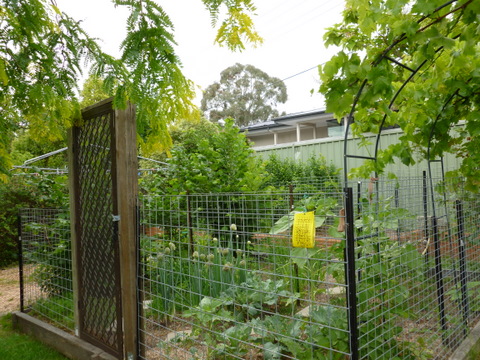
The most rewarding has not only been the tomatoes, the difference between home grown and shop bought known only too well, but the pleasure of eating homegrown potatoes, a flavour all their own. We have found the most difficult plants to grow organically are fruit trees but we are getting better including trying a new approach to codlin moth on the seven heritage apple varieties sourced from Woodbridge. For the first time each apple is wearing an apple stocking to prevent attack from the dreaded pest. The yellow sticky cards have prvoen to be a good organic way to reduce aphids and similar pests from near roses, fruit and vegetables.
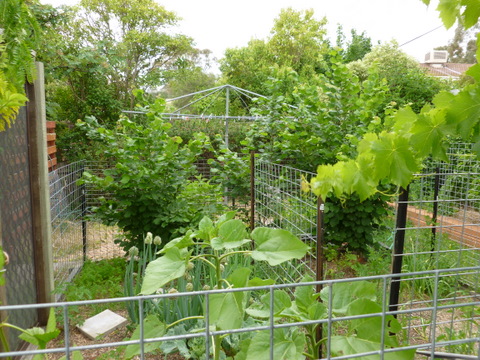
Like all best plans there has been a few failures including one crop of carrots that did not germinate well and a marauding possum taking up residence and availing itself of all the nectarines on the dwarf tree. The dwarf black mulberry had one good crop but this year lots of fruit which failed to grow and shrivelled for reasons we cannot fathom. The Jerusalem arthichokes make a delicious soup and are wonderful scrubbed and roasted but we discovered the hard way that even the smallest piece of peel can grow a new plant even in a compost bed. One attempt at growing Yacon succeeded but the taste was not thought good enough to deserve a space in the following season. The grape vine has not done too well in the Canberra climate, generally being a bit wet and humid at the wrong time of the year. This years looks to have a large crop – fingers crossed. Each failure is deemed as a learning experience rather than a negative one.
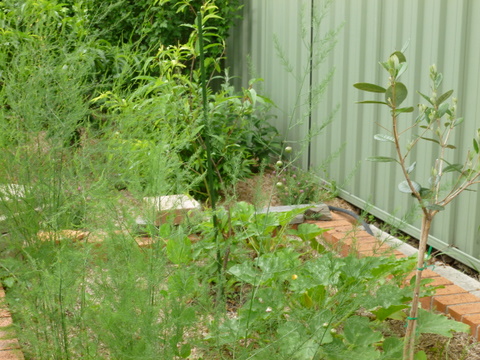
There has even been room left for a couple of roses, salvias, bearded iris intermingled with herbs and lettuce. With extensive mulching and help from the chooks, the care of the garden is relatively easy for the rewards gained. The difficult part is getting started and in building up the beds and fences to keep out chooks. After that it is easy care and really worth the experience.
Tell us your story!
This post has been submitted by one of SGA’s website subscribers. We want to share your great gardening stories with the rest of our readers. Do you have an interesting gardening story to tell? Click here to find out more.
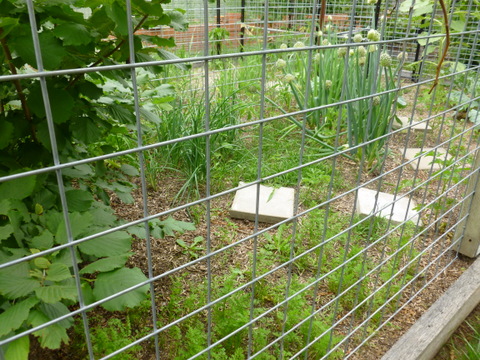
Related Articles:
Garden Journaling – Slow down to tune in.
As we move through the year and our gardens evolve, there's something magical about documenting the journey. Garden journaling is an art that enables…
The Importance of building soil health for a biodeverse, productive garden
Creating a thriving garden that not only sustains itself but also contributes to the broader ecosystem requires more than just sunlight and water.…




